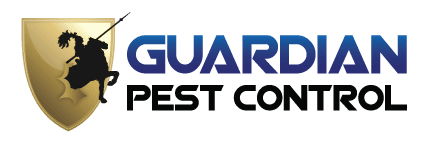Managing Populations: Utah's Vole Control Services
Managing Populations: Utah's Vole Control Services
Blog Article
Comprehensive Pest Control Solutions to Combat Vole Infestations
Vole infestations can quickly rise, triggering damage to yards, landscapes, and grass. The effect of these small rats can be considerable and speedy, requiring a comprehensive bug control approach to successfully take care of the scenario. Understanding the actions and biology of voles is critical in designing an integrated strategy that not just addresses the present invasion but also stops future occurrences. By employing a combination of recognition, exclusion, environment, and trapping alteration techniques, professional parasite control solutions can provide a customized solution to combat vole infestations. The vital lies in implementing an all-round plan that not only eliminates existing voles however additionally establishes long-term control procedures to guard against future intrusions.
Vole Recognition and Examination
When inspecting for voles, look for their characteristic paths, burrow openings, and munched plant origins. Munched plant origins are another sign of vole task, indicating their visibility and prospective damages to greenery. By precisely identifying these indicators, bug control professionals can customize their methods to effectively manage vole invasions and secure gardens and backyards from additional harm.

Trapping and Removal Techniques
Efficient pest control approaches for handling vole invasions usually entail using specialized capturing and removal methods. Trapping is a commonly used approach to catch voles and transfer them away from properties. Live catches, such as box catches or tube catches, are commonly made use of as they enable the secure capture of voles without creating damage. These traps are purposefully placed in vole paths or near burrow entryways to raise the opportunities of effective capture.
When establishing traps, it is important to ensure they are positioned effectively and baited with vole-preferred food resources like peanut butter, seeds, or fruits. Regularly examining the catches is vital to without delay eliminate caught voles and stop distress or harm to the pets. As soon as trapped, voles should be transferred to suitable environments much from human homes to stay clear of re-infestation.
Additionally, exclusion methods, such as installing obstacles or fencing underground, can help discourage voles from accessing specific areas. Proper disposal of recorded voles and regular tracking of vole activity are essential elements of an efficient capturing and elimination approach in vole problem management.
Exclusion and Obstacle Approaches

By attending to these susceptabilities and implementing targeted exclusion and obstacle steps, building owners can substantially decrease the threat of vole invasions. Eventually, a combination of trapping, elimination, and proactive exclusion measures can help effectively handle vole populaces and protect properties from problems.
Environment Adjustment and Avoidance
To alleviate vole problems, environment adjustment and prevention approaches focus on altering the setting to inhibit vole habitation. In addition, minimizing excess moisture by dealing with dripping pipelines, making sure appropriate water drainage, and eliminating standing water can make the environment less welcoming for voles.
Incorporating barriers like gravel borders or cord mesh underground can also stop voles from burrowing into gardens or lawns. By implementing these habitat alterations and avoidance steps, building proprietors can proactively decrease the threat of vole problems and protect their exterior areas from damage.
Monitoring and Follow-Up Strategies

Follow-up methods entail revisiting the treated locations to check for any signs of vole activity. Checking terminals, catches, and visual assessments are frequently utilized approaches to examine the success of the pest control steps. By regularly evaluating these locations, insect control experts can rapidly determine any resurgence of vole activity and take aggressive actions to attend to the problem before it intensifies.
In addition, recording the results of monitoring and follow-up activities is essential for tracking the progress of vole invasion control over time. These records assist in identifying trends, reviewing the effectiveness of various control techniques, and making educated choices for future parasite management methods. Normal follow-up procedures not only help in avoiding vole re-infestations yet likewise contribute to the overall success of bug control efforts.
Final Thought
To conclude, extensive pest control solutions are important for efficiently combating vole problems. By inspecting and determining vole populations, carrying out trapping and removal strategies, using exclusion and barrier techniques, modifying environments, and applying tracking and follow-up approaches, residential property proprietors can successfully manage and prevent future infestations. It is essential to address vole problems immediately to avoid damages to residential property and prospective health and wellness dangers.
By utilizing a combination of identification, habitat, capturing, and exemption adjustment strategies, expert parasite control services can offer a tailored remedy to battle vole invasions (best vole pest control). By precisely determining these indicators, insect control professionals can tailor their techniques to effectively take care of vole infestations and safeguard yards and backyards from additional harm
Reliable bug control methods for handling vole problems frequently include employing specialized capturing and removal vole control utah county strategies.To reduce vole invasions, environment modification and prevention techniques focus on altering the environment to discourage vole habitation.Routine monitoring and follow-up procedures are essential in maintaining vole invasion control actions and guaranteeing long-term success in parasite administration.
Report this page